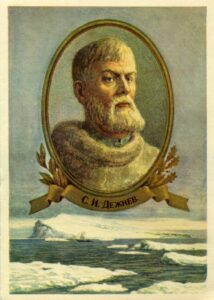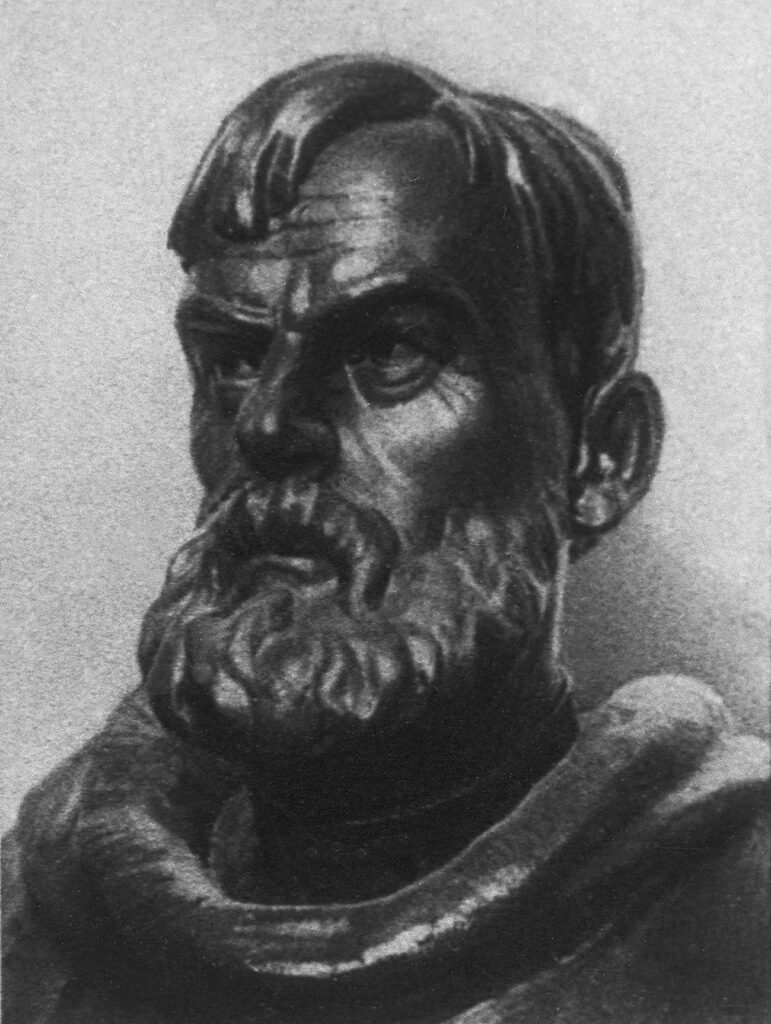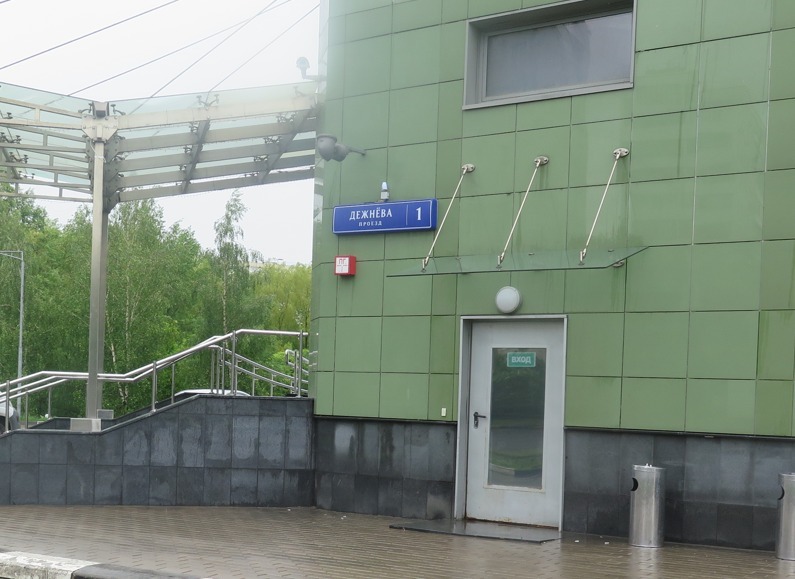Semyon Ivanovich
Dezhnev
the exact date of birth is unknown-1673

In the names of Moscow streets you can find the names of glorious Russian heroes – warriors, scientists, writers, discoverers, explorers, workers, whose exploits have gone down in the history of our country. Polar explorers, who explored the Russian North at the risk of their health and lives, also played an important role in the development of our country. Many places in Moscow are named after them, including the Dezhnev Passage, named in honour of the Russian navigator Semyon Ivanovich Dezhnev.
Semyon Ivanovich Dezhnev was a Cossack ataman, explorer and Arctic navigator, one of the discoverers of the Strait between Asia and North America, the Chukchi Sea, the North Pacific Ocean and the Chukchi Peninsula. He was born in Pinega to a family of peasant Pomors. He began his Siberian service as a private Cossack in Tobolsk at the end of 1630, then moved to Yeniseisk and, in 1637-38, to Lena ostrog (Yakutsk). He proved to be a kind of diplomat, settling disputes between local tribes, and at the same time a steadfast and skilful warrior. In the summer of 1641 he was appointed to the detachment of Mikhail Vasilyevich Stadukhin and with him reached the fortress on the Oymyakon (left tributary of the Indigirka). In mid-July the Cossacks reached the Kolyma delta, were attacked by the Yukaghirs, but broke through upriver and in early August established an ostrog (now Srednekolymsk) on its middle course. Dezhnev served on the Kolyma until the summer of 1647. He joined Fedot Alekseevich Popov’s fishing expedition as a collector of yazaks. However, severe ice conditions in 1647 forced the sailors to return home. It was not until the following summer that Popov and Dezhnev, with 90 people on seven kochas (sailing ships), headed east. From the mouth of the Kolyma River they reached the mouth of the Anadyr River, proving the existence of a division between Asia and North America. However, this historic discovery remained unknown for a long time, as all documents relating to the campaign were kept in the Yakutsk camp. In fact, Bering discovered the strait for the second time. According to the generally accepted version, only three ships reached the Bering Strait – two were lost in a storm, two were missing and one was wrecked in the strait. The remaining two ships passed the cape that was the northeastern point of Asia, called Big Stone Nose. On modern maps this cape is called Cape Dezhnev. At the beginning of October, in the Bering Sea, another storm separated the two remaining ships. Dezhnev and his 24 companions were thrown back to the Olyutor Peninsula, and it was ten weeks before they reached the lower reaches of the Anadyr. The results of the voyage were a drawing of the Anadyr, a detailed description of the nature of the region, the conditions of navigation on the river and a story about the Eskimos who lived on the shores of Chukotka and the neighbouring islands. In the summer, having travelled 600 kilometres up the river against the current, Dezhnev established a yasachnye winter camp on the Upper Anadyr, where he spent the New Year in 1650. From April 1650 to Dezhnev’s winter house began to approach on dog sleds vatagas of servants and fishermen, who laid from Kolyma to Anadyr through the Anyuisky ridge an overland route, which turned out to be more convenient than the sea route. In the summer of 1652, Dezhnev discovered a rich walrus rookery on a shoal south of the Anadyr estuary, with a large number of tusks from dead animals. The discovery of the rookery made the Russians’ stay in the fur-poor region a very profitable business. By the autumn of 1655, they had extracted over 4.7 tonnes of ‘fish bones’ for the Tsar’s treasury alone. In 1660 Dezhnev was replaced at his request. After wintering in Zhigansk via Yakutsk, he reached Moscow in September 1664. In the capital, Dezhnev received his salary, which had not been paid for 19 years, and, as a reward for his work, he was given a rank of ataman. He also took 819 kg of walrus tusks from Anadyr ‘for his trade’. All this allowed Dezhnev not only to pay off his debts, but also to become a wealthy man. The level of geographical knowledge in the XVII century did not allow his contemporaries to make a correct assessment of Dezhnev’s discoveries, however, the route from the Arctic Ocean to the Arctic Ocean, which he established, was known. His route from the Arctic Ocean to the Pacific Ocean was known even in Western Europe, which is reflected in a number of maps and geographical descriptions. In the last years of his life Dezhnev, fulfilling his administrative duties, served on the Chechuisky Volok, in Olenyok, Verkhoyansk and Srednevilyuisky winter camps. In 1670, Dezhnev led a group of Yakut servants to accompany the Sable Treasury to Moscow. He died in 1673. The names of Dezhnev are: a cape at the north-eastern tip of Asia, an island in the Laptev Sea, a village in the Jewish Autonomous District.
Address: Moscow, Dezhnev passage

